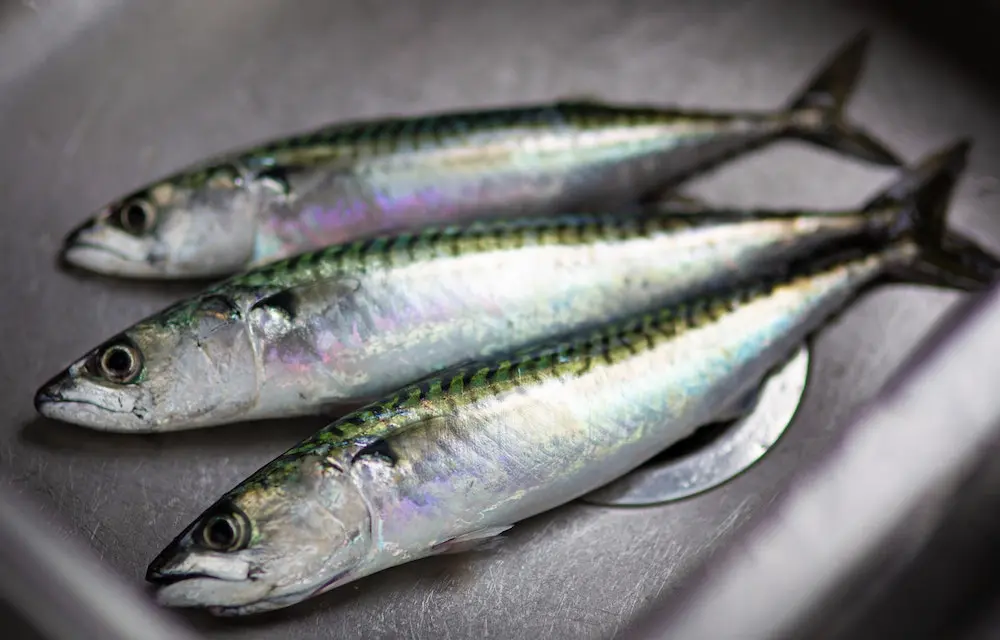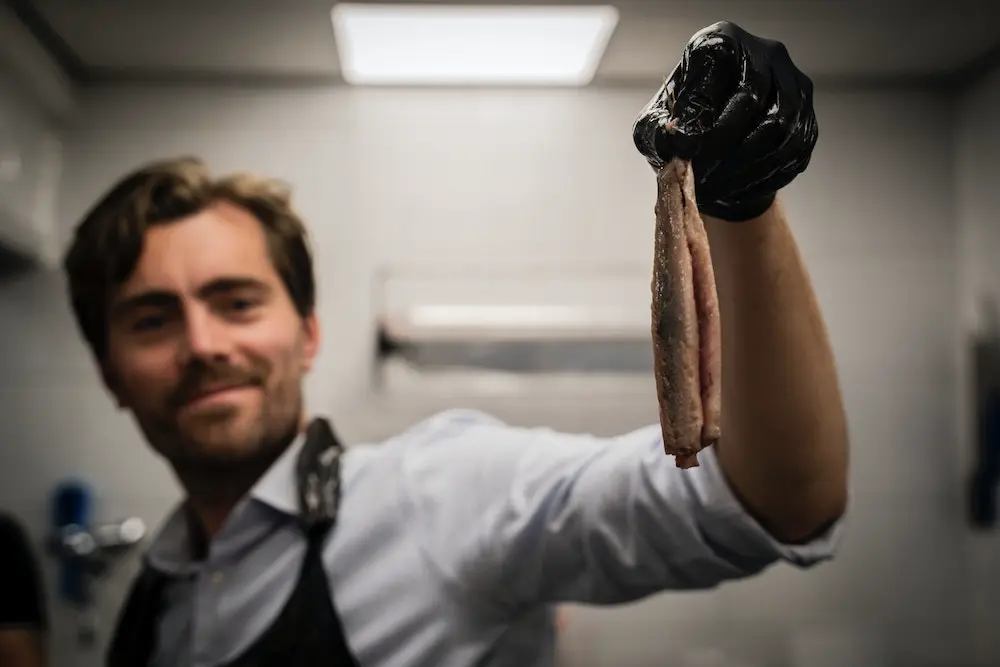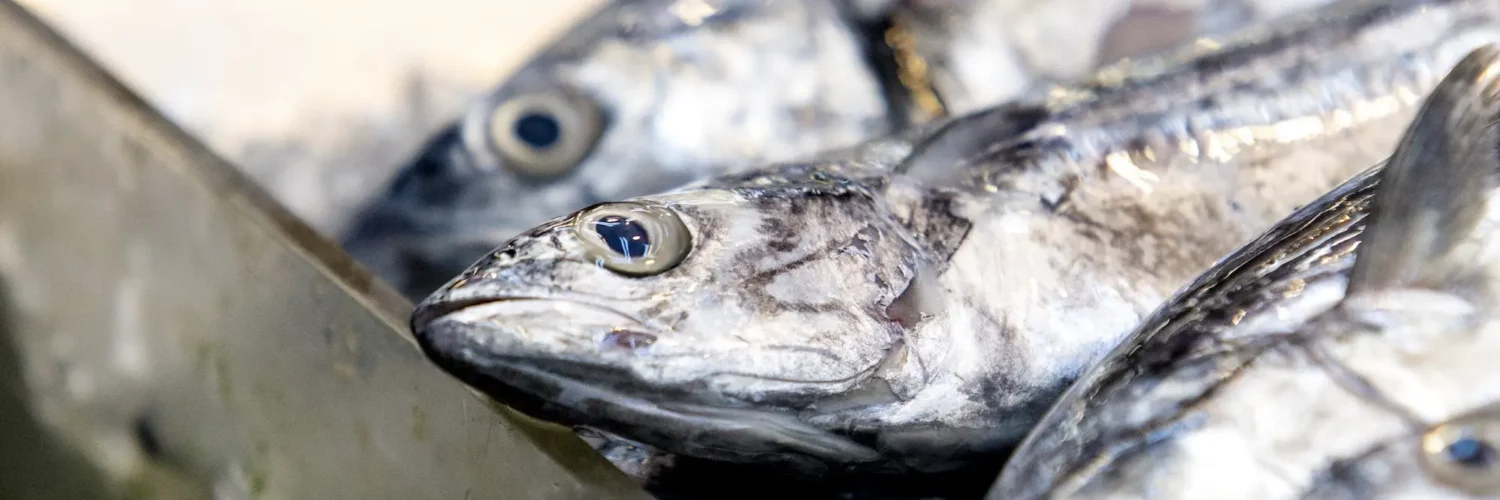Surströmming is a fermented herring from the Baltic Sea. The fish is caught in May and June. Then they are pickled and placed in large vats to start the fermentation process. After canning, the secondary fermentation follows. The fermentation releases organic sulfur compounds that provide the pungent stench.
Strömming is Swedish for herring. Literally translated, you could translate surströmming as ‘sour herring’.

Fermented herring
Like brining, fermentation is a way to preserve food for longer. In the 16th century, Sweden had a shortage of salt. When brining, they used less salt, which caused the herring to ferment. This is how the use to ferment herring originated.
Sour herring is a dish that many are ambivalent about. Some people praise it, others find it disgusting.
The herring is caught in early spring when it goes ashore to lay rum. An old guideline for when it’s time to lay out the herring herders, the long small-mesh herring nets, is that the branches of the birches begin to get mouse ears. The freshly caught herring is rinsed, salted and placed in open tubs where fermentation begins. After a fermentation period, it is packed in cans for post-fermentation. If all goes well, the sour herring will be ready on the third Thursday in August.
History of surströmming
During the 19th century, the tradition of eating herring also began to move through the social strata of society and the former poor man’s food became party food. The annual premiere of the Surströmmingsfest since 1940 has been set for the third Thursday in August. The increased demand and competition meant that the sour herring was sold unfinished (unfermented). The playful herring is fished in the spring. After cleansing, it should be left in strongly salted water (brine) for about two days or until all blood is dehydrated. Then it is placed in barrels with a weaker brine, for fermentation for six to eight weeks. In early July, it is usually ready to be packed in tin cans.

In the past, fermented herring was not allowed to be sold before the third Thursday of August. Nowadays, manufacturers can choose the start date themselves, but in general the third weekend in August is still used. Just like with the lobster parties, there are also surströmmingsskivor.
At the Disgusting Food Museum in Malmö you can smell, taste and buy the fermented herring to take home. The smell is so strong that it is best to open the can outdoors. Otherwise, the smell can linger in the house for days.
Due to the secondary fermentation, the cans with fermented herring are quite bulging. Because there is a risk of exploding under pressure, some airlines decided that surströmming cans are no longer allowed on board.

It is mainly the fishing villages on the High Coast (Höga Kusten) that are adept at producing the canned surströmming. In Skeppsmalen, near Örnsköldsvik, you can visit the Världens Första Surströmmingsmuseum. Here you get a historical, cultural and culinary overview of the much-discussed herring.
This is how you eat surströmming like a Swede
Tips for eating surströmming: open the can outside (to avoid the stench) and put it in a bucket of water. The pressure built up by the fermentation escapes when you open the can. If you wouldn’t use it up in a bucket of water, you risk being completely covered in the smelly gunk.
Surströmming in a typical dish
Surströmmingsklämma: is a kind of sandwich with buttered tunnbröd (Swedish flatbread) with the famous herring and potato slices in between. Red onion, dill, chives, tomato and cream can also be added to this.
Last Updated on April 28, 2023




